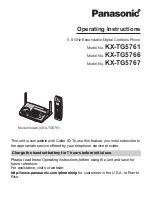
26
Prevention
Overview
When using this ATV, prevention is the
name of the game. “Had you only
known” something could go wrong, you
would have prevented it. If you don’t
notice your conditions and surroundings
before riding your ATV, you give up con-
trol over the situation. Using ATV pre-
vention techniques helps you forecast
potential hazards before they injure you
or damage your ATV.
Following the safety instructions and
warnings in this manual will help you
“P.A.S.S.” the safety test. P.A.S.S. stands
for “
P
revention,” “
A
ctive Riding,”
“
S
ound Judgment,” and “
S
upervision.”
Remembering P.A.S.S. and what it stands
for will help you have a safe, predictable
ride every time you go out on your ATV.
Always wear clothing suited to the type
of riding you are doing. TRV riding
requires special protective clothing
which will make you feel more comfort-
able and reduce chances of injury.
You’ll find it important to dress correctly
for riding in order to prevent scraped skin
and serious head injuries. It’s easy and
could save you time in the long run not
having to contend with an injury. Of
course, it also makes sense to remember
the seasons. Wear a hat under your hel-
met and a snowmobile suit in the winter
and lighter, protective clothing in the
summer. Following is the minimum pro-
tection you need to wear during every
ride:
ATV-0004
Gloves
Your hands are targets for flying objects and
branches. Along with providing skin pro-
tection, gloves will shield your hands from
harsh weather. Wear gloves that are weather
resistant and have a gripping surface to
keep them from sliding off the handlebars.
Off-road style gloves with knuckle pads are
the best for comfort and protection.
Boots/Ankle Protection
Wear a boot that covers the largest possi-
ble area of your leg (preferably up to
your knee) and can handle significant
impact. Choosing boots with low heels
and a good tread will help prevent your
feet from slipping off the footrests in wet
or rugged conditions or getting hurt if
they get hit by rocks, dirt, or branches.
Helmet
Your helmet is the most important piece
of protective gear for safe riding. A hel-
met can prevent a severe head injury.
There are several types of helmets on the
market, but make sure you wear a helmet
that complies with the current standards
of the U.S. Department of Transportation
(DOT), The Snell Memorial Foundation,
or the American National Standards
Institute (ANSI). Helmets that comply
with one or more of these agency’s stan-
dards have a sticker on the inside or out-
side of the helmet.
Safe Riding Clothing
and Gear (Operator
and Passenger)
2011 TRV
2012 TRV
Summary of Contents for 2012 700 i Cruiser
Page 65: ...63 Previous Main Table of Contents Section Table of Contents Next NOTES 2012 Y 12 ...
Page 66: ...64 Previous Main Table of Contents Section Table of Contents Next NOTES 2012 Y 12 ...
Page 210: ...Division I Safety 7 Previous Main TOC Section TOC Next Warning Labels Utility KM152C 2012 300 ...
Page 211: ...8 Previous Main TOC Section TOC Next Warning Labels DVX KM169E 2012 300 ...
Page 374: ...Division I Safety 9 Previous Main TOC Section TOC Next Warning Labels DE052B 2012 700 Diesel ...
Page 527: ...79 Previous Main TOC Section TOC Next NOTES 2011 650 2012 650 2011 650 2012 650 ...
Page 528: ...80 Previous Main TOC Section TOC Next NOTES 2011 650 2012 650 2011 650 2012 650 ...
Page 613: ...82 Previous Main TOC Section TOC Next NOTES 2012 Generic ATV ...
Page 704: ...86 Previous Main TOC Section TOC Next NOTES 2011 TRV 2012 TRV ...
















































